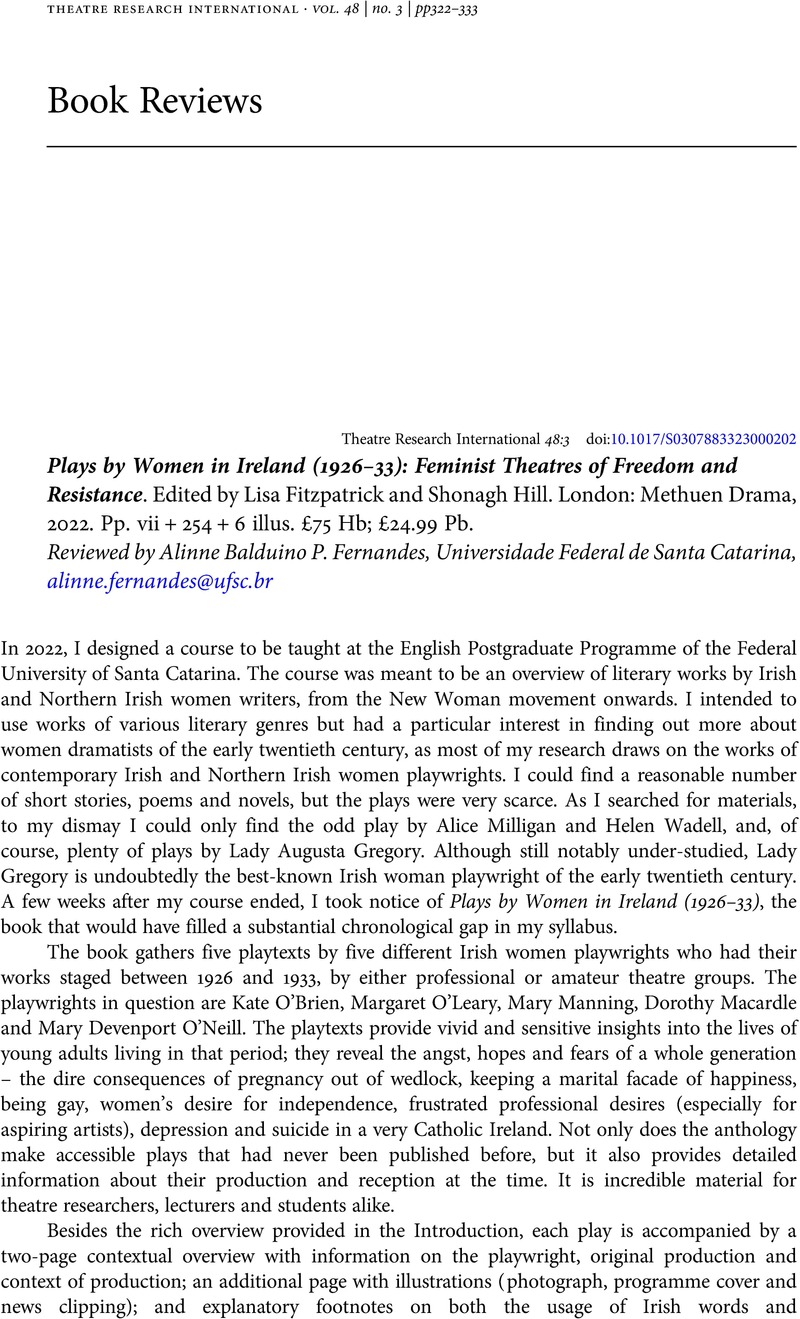No CrossRef data available.
Article contents
Plays by Women in Ireland (1926–33): Feminist Theatres of Freedom and Resistance. Edited by Lisa Fitzpatrick and Shonagh Hill. London: Methuen Drama, 2022. Pp. vii + 254 + 6 illus. £75 Hb; £24.99 Pb.
Review products
Plays by Women in Ireland (1926–33): Feminist Theatres of Freedom and Resistance. Edited by Lisa Fitzpatrick and Shonagh Hill. London: Methuen Drama, 2022. Pp. vii + 254 + 6 illus. £75 Hb; £24.99 Pb.
Published online by Cambridge University Press: 09 November 2023
Abstract
An abstract is not available for this content so a preview has been provided. Please use the Get access link above for information on how to access this content.

- Type
- Book Review
- Information
- Copyright
- Copyright © International Federation for Theatre Research 2023


